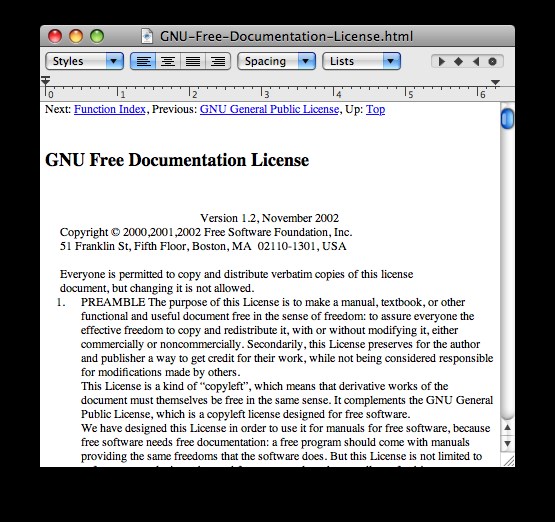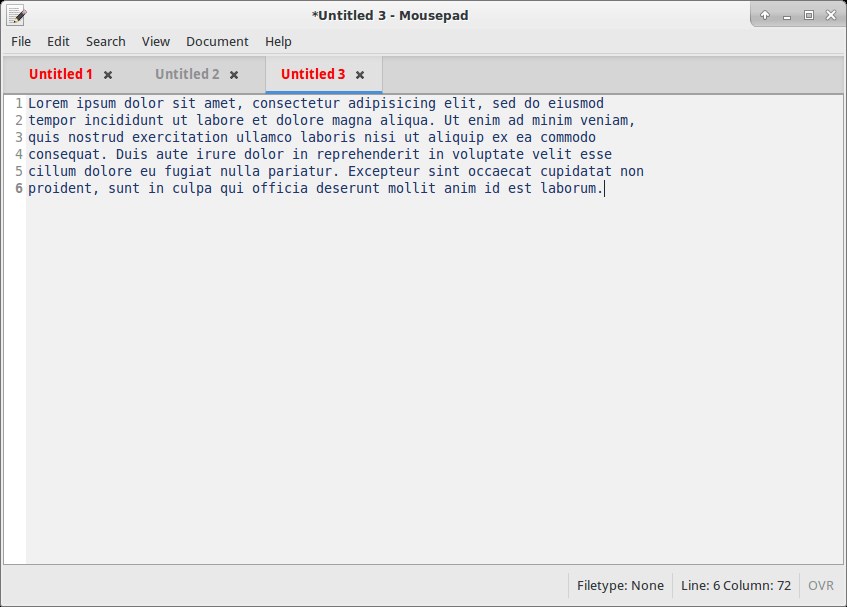

A frame may have more than one tab, each containing a different buffer, in the same way that a web browser can several web pages open at once in different tabs.You may also be unfamiliar with the Aquamacs terms "directory" (folder) and "search" (find).Īpart from the ATF menu, the File, Edit, Options, and Windows menus will be most useful to you. You are unlikely to need anything in Tools, and the Help menu lists far too many different sorts of help to be useful for a beginner. #How to command f search for newline aquamacs windows#Įven on the File, Edit, Options, and Windows menus there are many items that you will never need, so do not worry if they seem mostly incomprehensible to you for now. There is also a toolbar at the top of each Emacs frame, with clickable icons for basic editing and file commands. You can add items to the toolbar, and remove them from it, by selecting and deselecting them from the Options > View > Toolbar Items menu item. Menus and toolbars are comforting and intuitive, especially when you are first learning to use a new piece of software. But for more efficient working it is useful to learn as many keyboard shortcuts as possible. Next to most menu items you will see the equivalent keyboard shortcut, and there are many hundreds more. But almost everything you will need can be found through the menus or is described on this page. The Control and Meta keysĪlmost all Emacs keyboard shortcuts are combinations with the Control or Meta keys. You'll see them written as, for instance, C-g or M-x. The minibuffer is Emacs's name for the little window that appears at the bottom of a frame when you type a command and where, for instance, you type text that you want to find or replace. If you find your cursor there accidentally C-g will get you out of it with no harm done. #How to command f search for newline aquamacs windows#.#How to command f search for newline aquamacs mac#.#How to command f search for newline aquamacs install#.> (define-key osx-key-mode-map (kbd "C-c C-") 'ess-eval-buffer-from-beg-to-here)

> I tried either one of the first two lines, the second I found online, the first is similar to what I found out to define a keystroke for "eval buffer till here" (which works well and even shows up in the menus): For the Apple key, I am also not sure if "A" is correct (however, I found it under ) I am not even sure if I address the keys correctly, I also tried, for example. > (define-key osx-key-mode-map (kbd "A-") 'ess-S-assign-key)

> I don't need/want to change the smart underscore behavior, I just want to add this additional way of putting in the assignment key "> Here are things I tried: I was wondering how I can get ESS to accept the keystroke "Command (= Apple key) + Return" to give me the assignment arrow "> I read some posts I found and tried to adapt those, but Aquamacs reports errors on startup. > I am a new user of Aquamacs and it helps me a lot to have some "native Apple commands" available which I got used to over the last years. > is called, but it is usually (always I think) the name of the mode. > you want to bind it, you need to figure out what the hook and mode-map > (define-key ess-mode-map 'ess-smart-underscore) > So now I have the key and the function. I use Cocoa Emacs myself, which is "standard They have done a _lot_ toĬustomize Emacs, to make it more Mac-like, so some things work If I replace "hyper" by "A" below, it works! :-))) Thanks a lot! > You figure this out by pressing C-h k again: > experience the Apple key yields either super or hyper in Emacs, but > and s), which various keys on the keyboard can be bound to. Modern Emacs have two other keys 'hyper' and 'super' (abbr h > Step 2: figure out what key you are pressing. > thank you very much, that clarified a lot! (I am only using emacs for a couple of days now.) > (C-h k is "help on key"), tells me that the function is called > you can use that you know the function is already bound to underscore, > Step 1: figure out what function you want to bind to the key.

On, at 15:46, Kasper Daniel Hansen wrote:


 0 kommentar(er)
0 kommentar(er)
